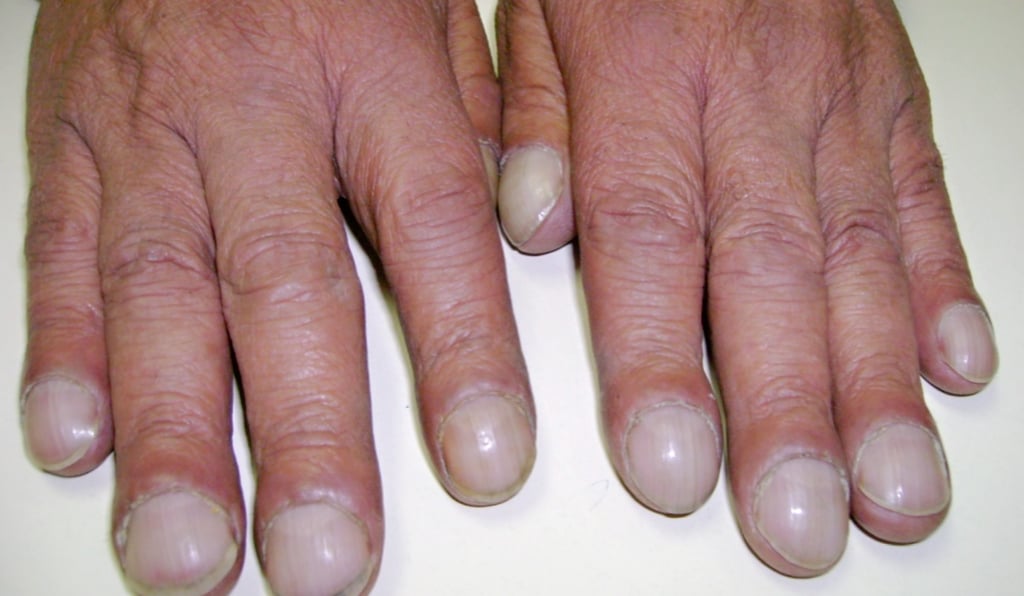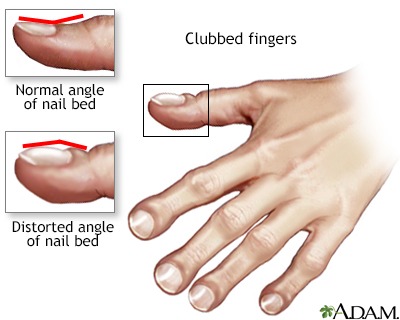Nail Clubbing: What It Means and Why It Matters
Nail clubbing is a condition where the tips of your fingers or toes become swollen and your nails change shape becoming rounder and more curved. At first glance it might just seem like a strange change in your nails but nail clubbing can actually be a sign that something important is going on inside your body. It is a signal that doctors pay close attention to because it often points to underlying health issues that need care.
IN BRIEF
Thinkbrief
7/19/20253 min read


When someone has nail clubbing their nails curve more than usual sometimes described as looking like a spoon or a watch glass. The skin around the nails can feel softer or spongy and the angle between the nail and the skin changes noticeably. The fingertips themselves may look enlarged or bulbous. Usually this happens on both hands or feet but sometimes it can affect just one side.
This physical change has been noticed for centuries. Even Hippocrates one of the fathers of medicine wrote about it in people with chronic lung problems. Since then doctors have learned that nail clubbing is linked to many serious health conditions involving the lungs heart digestive system and other parts of the body.
Scientists are still trying to fully understand why clubbing happens. One idea is that when the body is not getting enough oxygen over a long time more blood flows to the fingertips causing the tissues there to grow. Another important idea involves certain substances in the blood that encourage blood vessel growth and tissue swelling in the fingertips. These substances can come from cells that normally get filtered out by the lungs but sometimes sneak through into the bloodstream when lungs or other organs are not working well. This causes the nails and the tissue beneath them to change over time.
Nail clubbing is almost never a problem on its own. Instead it is a clue to a deeper issue. Many lung diseases can cause clubbing including infections like tuberculosis chronic conditions like cystic fibrosis and lung cancers. Heart conditions that cause low oxygen levels can also lead to clubbing as can diseases that affect the liver or intestines.
People usually notice nail clubbing when their nails start to look different sometimes slowly over months or years. In most cases it does not hurt but sometimes the fingertips can feel tender. Since clubbing is usually part of a larger health problem people may also have other symptoms like cough difficulty breathing stomach pain or fatigue.
Doctors use simple tests to recognize nail clubbing. One way is to look at the angle where the nail meets the skin when clubbing is present this angle becomes wider. Another quick test involves placing the tips of the same fingers from both hands together normally a small diamond-shaped space is visible between the nails but this disappears in clubbing.
Finding nail clubbing on a patient prompts doctors to look deeper. They ask questions do physical exams and order tests like chest X-rays or heart ultrasounds to find out what might be causing it. The goal is to identify and treat the underlying condition.
Treating nail clubbing means addressing the root cause. If the illness causing it can be cured or managed well the clubbing might improve or at least stop getting worse. But in some cases where the underlying disease is chronic or untreatable the changes in the nails stay permanently.
It is important to remember that nail clubbing itself is not a disease but a sign. Its presence is a message from the body that something needs attention. For people who notice their nails changing or for those whose doctors find clubbing during an exam it is a chance to explore what might be going on inside and get help early.
In summary nail clubbing is more than just a change in your nails. It is a window into your overall health. Paying attention to these signs and understanding what they mean can make a big difference in detecting serious illnesses early. If you or someone you know notices changes in their nails it is a good idea to check in with a healthcare provider. Sometimes the smallest clues on the outside can tell us the most important stories about what is happening inside.

